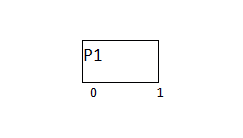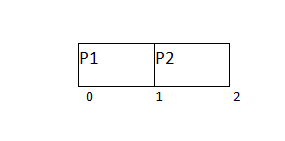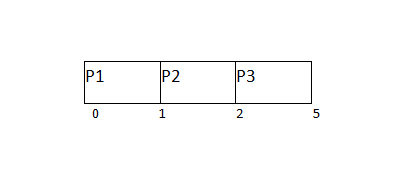Preemptive Priority SchedulingIn Preemptive Priority Scheduling, at the time of arrival of a process in the ready queue, its Priority is compared with the priority of the other processes present in the ready queue as well as with the one which is being executed by the CPU at that point of time. The One with the highest priority among all the available processes will be given the CPU next. The difference between preemptive priority scheduling and non preemptive priority scheduling is that, in the preemptive priority scheduling, the job which is being executed can be stopped at the arrival of a higher priority job. Once all the jobs get available in the ready queue, the algorithm will behave as non-preemptive priority scheduling, which means the job scheduled will run till the completion and no preemption will be done. ExampleThere are 7 processes P1, P2, P3, P4, P5, P6 and P7 given. Their respective priorities, Arrival Times and Burst times are given in the table below.
GANTT chart PreparationAt time 0, P1 arrives with the burst time of 1 units and priority 2. Since no other process is available hence this will be scheduled till next job arrives or its completion (whichever is lesser). 
At time 1, P2 arrives. P1 has completed its execution and no other process is available at this time hence the Operating system has to schedule it regardless of the priority assigned to it. 
The Next process P3 arrives at time unit 2, the priority of P3 is higher to P2. Hence the execution of P2 will be stopped and P3 will be scheduled on the CPU. 
During the execution of P3, three more processes P4, P5 and P6 becomes available. Since, all these three have the priority lower to the process in execution so PS can't preempt the process. P3 will complete its execution and then P5 will be scheduled with the priority highest among the available processes. 
Meanwhile the execution of P5, all the processes got available in the ready queue. At this point, the algorithm will start behaving as Non Preemptive Priority Scheduling. Hence now, once all the processes get available in the ready queue, the OS just took the process with the highest priority and execute that process till completion. In this case, P4 will be scheduled and will be executed till the completion. 
Since P4 is completed, the other process with the highest priority available in the ready queue is P2. Hence P2 will be scheduled next. 
P2 is given the CPU till the completion. Since its remaining burst time is 6 units hence P7 will be scheduled after this. 
The only remaining process is P6 with the least priority, the Operating System has no choice unless of executing it. This will be executed at the last. 
The Completion Time of each process is determined with the help of GANTT chart. The turnaround time and the waiting time can be calculated by the following formula.
Avg Waiting Time = (0+14+0+7+1+25+16)/7 = 63/7 = 9 units
Next TopicSRTF:IO bound processes
|
 For Videos Join Our Youtube Channel: Join Now
For Videos Join Our Youtube Channel: Join Now
Feedback
- Send your Feedback to [email protected]
Help Others, Please Share










